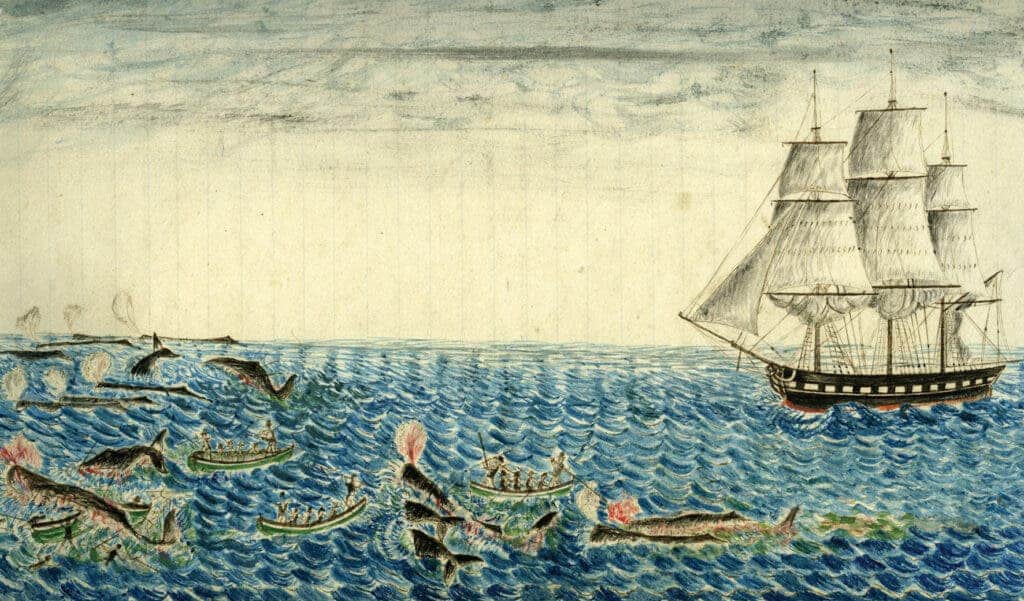While constantly harassed by hunters, sperm whales during the 19th century were clever enough to learn how to avoid the ships — and social enough to share this information with other whales. This led to a significant drop in the strike rate of harpooners in just a few years and might have avoided more whales being killed, a new study reveals.

Sperm whales (Physeter macrocephalus) are considered the largest of all toothed whales, having the widest global distribution of any marine mammal species. They can be found in all deep oceans and are names after the waxy substance (spermaceti) found in their heads – which was used to make oil lamps, lubricants, and candles.
They were the main target of the commercial whaling industry from 1800 to 1987, as exhibited in the legendary Moby Dick book. Whalers from Europe and North America spread around the world looking for new grounds and new species. Once sighted, whalers stroke them with hand-thrown harpoons and towed them back to the boat to be processed.
Some historians have suggested that the success rate of open-boat whalers in harpooning sighted whales dropped substantially during the initial years of industrial exploitation and that this was due to socially learned changes in whale behavior. Proving this belief was the main goal of a group of United States researchers.
Researchers led by Hal Whitehead, a professor of biology at Dalhousie University in Nova Scotia, analyzed newly-digitized logbooks kept by whalers during their hunting voyages in the North Pacific. They found that the strike rate of the whalers’ harpoons fell by 58% in just a few years – which they link to the whales sharing information between them.
Whitehead explained the whales at first reacted to the threat of the hunters as they would to the killer whale, which was their single predator back then. The whales gathered together on the surface, put the baby in the middle, and slapped their tales to defend themselves. By doing so, they made themselves an easy target to the vessels.
But the whales eventually learned from their mistakes, according to the study. They adapted to their new predator by implementing a new tactic, swimming fast upwind and away from the whalers’ wind-powered vessels. The tactic soon spread around the whale community, with whales learning getaway techniques from each other.
This isn’t random, as sperm whales are excellent at sharing information. They have a highly observant and communicative nature, and the fact that each family unit only stays in larger groups for a few days at a time means they can share information fast. They have the largest brains on the planet, so they likely knew what was going on.
“Each whale group that you meet at sea typically comprises two or three family units, and the units quite often split off and form other groups,” Whitehead told Live Science. “So, what we think happened is that one or two of the units that make up the group could have had encounters with humans before, and the ones who didn’t copy closely from their pals who had.”
Commercial whaling largely decreased the sperm whale population worldwide, with the best estimate now being between 300,000 and 450,000 individuals. A moratorium was placed on whaling in 1986 and species have been recovering since then. Still, other threats remain such as longline fishing, noise pollution, and the changing source of their food due to climate change.
The paper was published in the journal Biology Letters.
Was this helpful?



